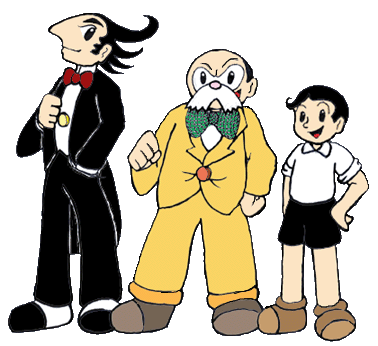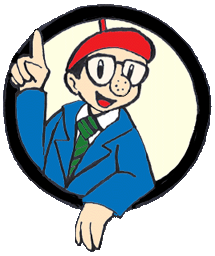
Designing Comic Strips:
Step 2: Design Characters
Contents





So now that you have a story, you'll need characters!
When I designed my comic strips, I used my characters like actors. Often they were type cast, playing the same roles over and over again. Duke Red usually played a classy villan, Shunsaku Ban plays both a teacher and detective and Kenichi Shikishima often portrayed a young hero.

Duke Red, Shunsaku Ban, and Kenichi Shikishima are copyrighted to Tezuka Productions
Notice that the characters are designed according to the part they will play in the story.
Duke Red has an air of dignity about him, Shunsaku Ban has a solid build, and Kenichi looks like an average boy.
When designing your characters, use the story to help guide you. Will your hero be athletic or will they be a clever, ordinary person? Will your main character be an average student or a genius? Who will they interact with: a cunning villan or one of their silly peers? The choice is entirely up to you.
If you need further information or ideas, ask your teacher for the handout on character design.
For this project your teacher wants you to use character sheets to help you design your characters.
A Character Sheet is a page that shows a character from many angles. It is often used in animation to help a team of animators draw the same character consistently. (You wouldn't want them all drawing it differently in every frame would you)? Character sheets often show the character in five poses, your teacher is only requiring you to show it in four positions with four expressions. If you need to see an example of a character sheet, click here. This sheet was created by an 8th grade girl.
I chose to use my characters as actors for a variety of reasons. But one of those reasons was that I believed that:
"Comics are an international language. They can cross boundaries and generations. Comics are a bridge between all cultures."

If a person is familiar with my characters, they don't have to read Japanese to understand what is going on! They already know because they know what sort of person the characters are, and the pictures fill in the rest of the story! If a comic strip is designed well enough, you will know what is going on without even reading a word! Which takes us to the next step, Layout.
Questions? Please e-mail Sarah Showalter: [email protected]